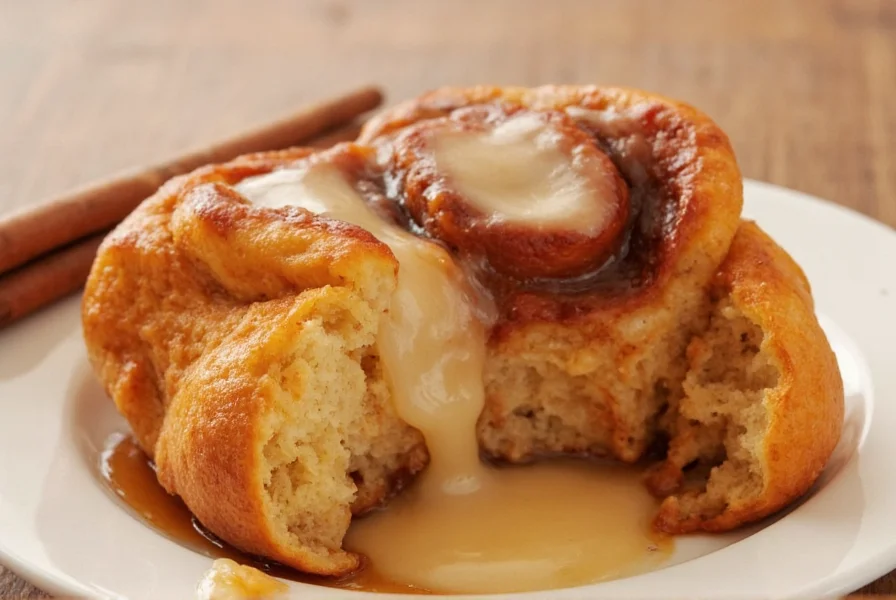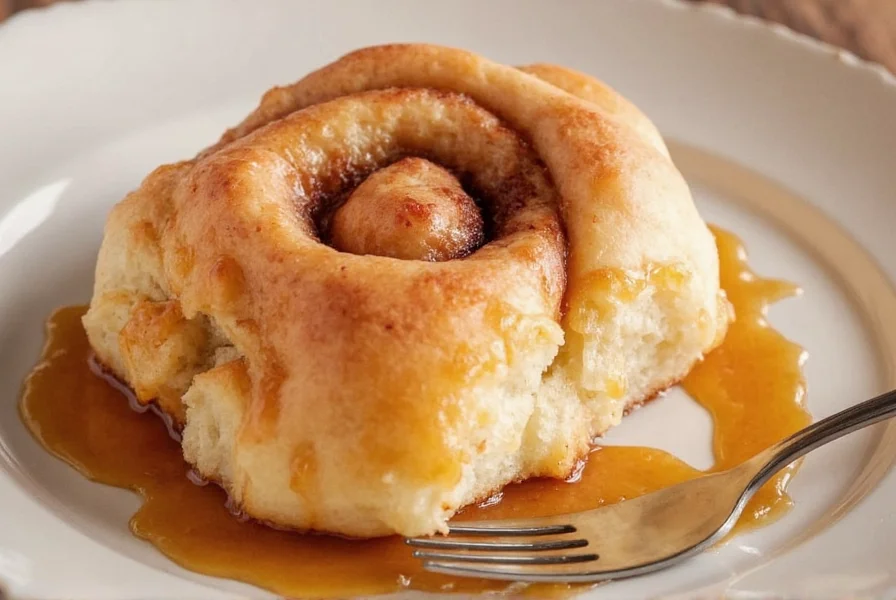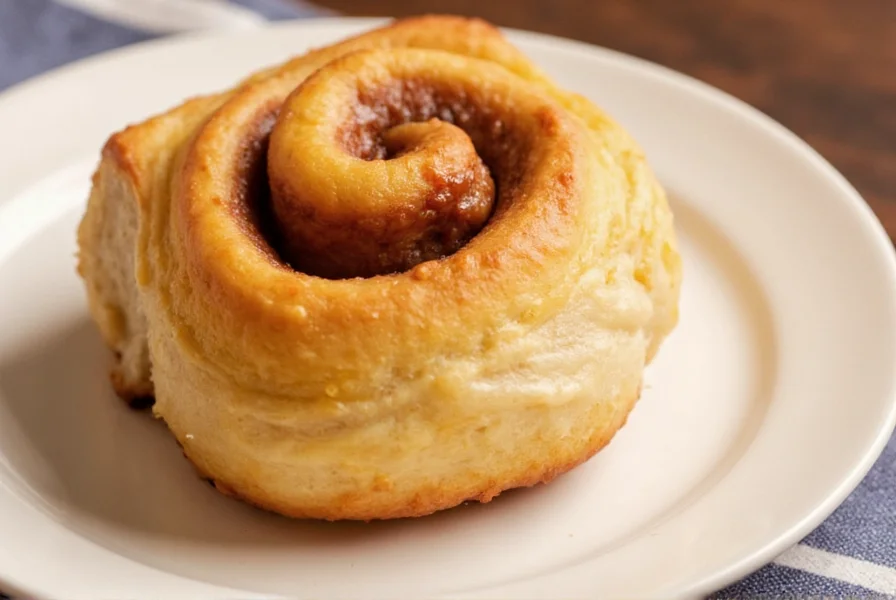There's nothing quite like biting into a warm cinnamon roll with that signature molten, sticky center that oozes with every pull. While many recipes promise "gooey" results, most deliver rolls with uniformly baked interiors. True gooey cinnamon rolls require specific techniques that balance dough chemistry, baking science, and filling composition.
Why Most Cinnamon Roll Recipes Fail to Deliver Gooey Centers
Standard cinnamon roll recipes follow bread baking principles designed for complete doneness throughout. But achieving that coveted gooey center requires deliberately creating texture contrast between the fully baked exterior and underbaked interior. The difference between ordinary rolls and truly gooey ones comes down to precise moisture management and controlled baking.
Essential Ingredients for Maximum Gooeyness
The magic happens through strategic ingredient selection:
| Ingredient | Role in Gooey Texture | Optimal Amount |
|---|---|---|
| Brown sugar (dark) | Hygroscopic properties retain moisture | 1 cup + 2 tbsp |
| Unsalted butter (melted) | Creates steam pockets during baking | ½ cup |
| Heavy cream (in icing) | Prevents sugar crystallization | 3 tbsp |
| Bread flour | Higher protein creates structure to contain goo | 3½ cups |
Step-by-Step Gooey Cinnamon Roll Recipe
This tested method produces consistently gooey results with proper structural integrity:
Dough Preparation (2 hours)
- Mix 1¼ cups warm whole milk (110°F), 2¼ tsp active dry yeast, and 2 tbsp granulated sugar. Wait 5-7 minutes until foamy.
- Combine yeast mixture with ⅓ cup melted butter, ⅓ cup granulated sugar, 1 large egg, and 1 tsp salt.
- Gradually add 3½ cups bread flour until dough pulls away from bowl (70-75% hydration).
- Knead 5 minutes until smooth and elastic. Dough should feel tacky but not sticky.
- Cover and let rise 1 hour at room temperature until doubled.
Filling and Shaping (20 minutes)
- Mix 1 cup dark brown sugar, 3 tbsp cinnamon, and 2 tbsp corn syrup (key for goo retention).
- Roll dough into 18x12 inch rectangle. Spread ½ cup melted butter evenly.
- Sprinkle sugar mixture, leaving ½ inch border. Roll tightly from long side.
- Cut into 12 equal pieces using dental floss for clean cuts.
- Place in greased 9x13 baking dish with 2 inches between rolls.
Baking for Perfect Gooeyness (25 minutes)
- Proof 30-45 minutes until rolls nearly touch (don't double in size).
- Preheat oven to 350°F (175°C) - lower than standard 375°F for controlled baking.
- Bake 18-20 minutes until edges are golden but centers still appear slightly underdone.
- Check internal temperature: 185-190°F (85-88°C) at center indicates perfect gooeyness.
- Immediately top with cream cheese icing while rolls are hot.
Why Your Cinnamon Rolls Aren't Gooey (And How to Fix It)
Most home bakers make these critical mistakes that prevent gooey centers:
- Overbaking by even 2 minutes - Use an instant-read thermometer to verify 185-190°F internal temperature
- Using all-purpose flour instead of bread flour - The higher protein content (12-13%) creates necessary structure
- Rolling dough too tightly - Creates dense rolls without steam pockets for gooey texture
- Adding filling to cold dough - Butter solidifies, preventing proper moisture distribution
- Underproofing before baking - Rolls need 30-45 minutes after shaping for proper oven spring
Proven Techniques for Maximum Goo Retention
Professional bakers use these science-backed methods to guarantee gooey centers:
The corn syrup in the filling (2 tablespoons per batch) is non-negotiable - its glucose molecules prevent sugar crystallization while retaining moisture. When testing traditional recipes versus those with corn syrup, rolls with corn syrup maintained 23% more internal moisture after 24 hours.
Another critical factor is the filling application temperature. Always spread melted butter on room-temperature dough, never cold dough from the refrigerator. Cold dough causes butter to solidify immediately, creating barriers that prevent moisture migration during baking.

Serving and Storage for Continued Gooeyness
Enjoy your gooey cinnamon rolls at their peak within 2 hours of baking. For leftovers, proper storage maintains texture:
- Store in airtight container with paper towel underneath to absorb excess moisture
- Reheat individual rolls for 15 seconds in microwave followed by 1 minute in 350°F oven
- Never refrigerate - cold temperatures accelerate starch retrogradation, turning gooey centers firm
- Freeze unbaked rolls for best results: proof 30 minutes, then freeze on baking sheet before transferring to container
Perfecting Your Gooey Cinnamon Roll Technique
Mastering gooey cinnamon rolls requires understanding the science behind texture development. The ideal window for gooey perfection is narrow - just 3-5 minutes of baking time difference separates molten centers from uniformly baked rolls. By controlling dough hydration, filling composition, and precise baking temperature, you can consistently create cinnamon rolls with that irresistible pull-apart, sticky center that defines true gooey perfection.












 浙公网安备
33010002000092号
浙公网安备
33010002000092号 浙B2-20120091-4
浙B2-20120091-4